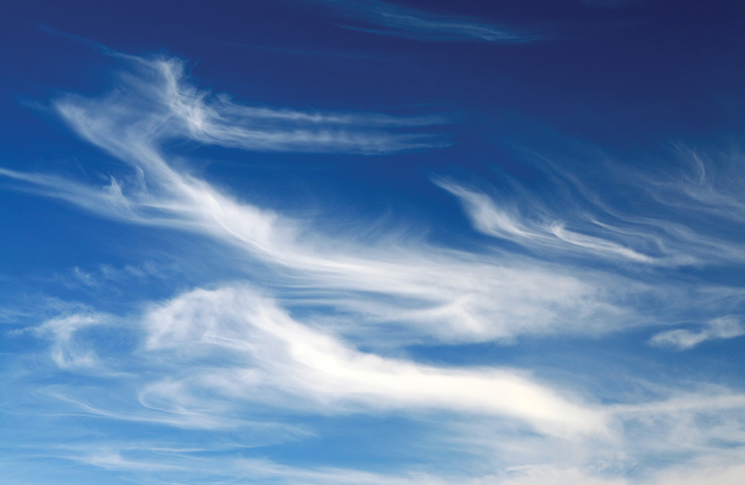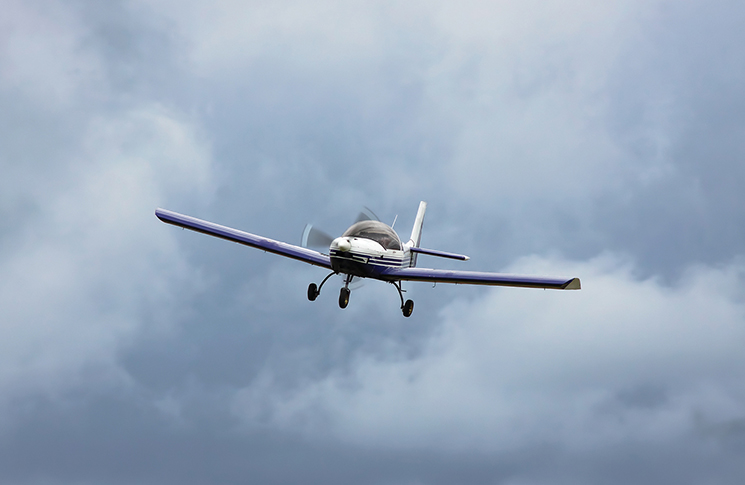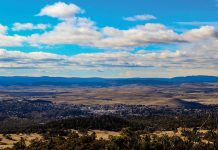1. Dew point is the temperature at which:
- dew will form
- fog will form
- condensation and evaporation are equal
2. What measurement can be used to determine the stability of the atmosphere?
- actual lapse rate
- atmospheric pressure
- surface temperature
3. When passing through a cold front, a pilot is likely to experience:
- squalls, turbulence and possible thunderstorms with heavy showers, followed by a rapid drop in temperature and a lower cloud base of cumulus
- a rise in temperature and steady rain
- lenticular clouds and increased visibility
4. Which type of fog is associated with moist air moving over a cool surface?
- radiation
- upslope
- advection
5. What does a thunderstorm need to form?
- low-pressure system, strong updrafts, low dew point
- high humidity, unstable atmosphere, a lifting force
- low humidity, high dew point, high-pressure system

6. What type of cloud is this, and what weather is associated with it?
- nimbostratus: grey cloud layer, rain or sleet, thunder and lightning
- nimbostratus: grey cloud layer, rain or snow,
no thunder or lightning - cirrus: wispy clouds and ice crystals
7. What weather report can you use to find forecast altitudes for cloud tops?
- Airmet
- Graphical Area Forecast (GAF)
- Terminal Area Forecast (TAF)

8. What type of cloud is this?
- cirrus
- virga
- altostratus
9. The suffix ‘nimbus’ is used to describe what kind of cloud?
- middle-level cloud containing ice pellets
- a rain cloud
- a cloud that forms over a mountain
10. A moist unstable air mass will result in:
- foggy conditions
- persistent rain
- cumuliform clouds and showers
11. Which weather condition is worst for airframe icing?
- cirrostratus cloud
- freezing rain
- altostratus cloud
12. When air temperature and dew point are only one degree apart:
- the visibility is excellent
- the air is very humid
- the air is very dry
13. Lenticular clouds are often associated with:
- turbulence
- thunderstorms
- rain showers
14. Where can wind shear occur?
- at all altitudes and in all directions
- close to the ground (below 300 ft)
- at low altitude (below 3,000 ft)
Answers
- (c) Dew point is the temperature to which air must be cooled to become saturated by the water vapor already present in the air.
- (a) The difference between the existing lapse rate of a given mass of air and the adiabatic rates of cooling in upward moving air determines if the air is stable.
- (a) A front usually has rough weather and cumulus on the leading edge.
- (c) Advection fog is associated with moist air moving over a cooler surface.
- (b) High humidity, unstable atmosphere and a lifting force are the ingredients needed to make a thunderstorm.
- (b) Nimbostratus is a type of cloud associated with a thick grey cloud layer, and rain or snow without lightning or thunder.
- (b)
- (a)
- (b)
- (c)
- (b)
- (b)
- (a)
- (a)






Comments are closed.